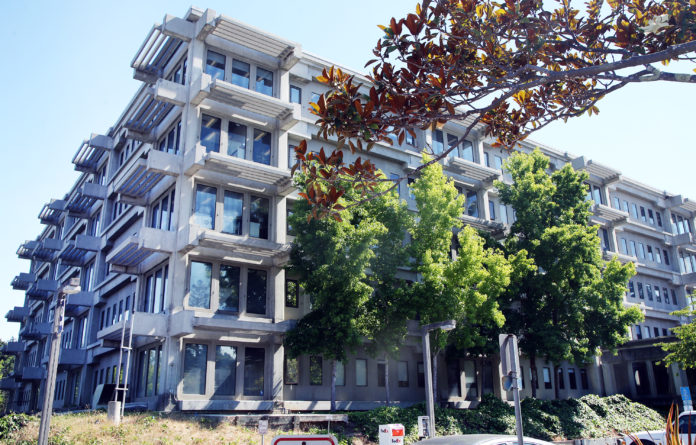The Santa Cruz County Board of Supervisors on Tuesday took a first look at this year’s finances in advance of budget hearings in June.
The $1.23 billion budget proposal is $176 million less than last year’s budget, and has not yet taken into account possible changes coming from the Trump administration as it makes cuts to state and federal programs across the U.S.
Already, the county has lost two federal public health grants worth $408,000, which funded nearly six full time equivalent health services positions. While county officials saved those positions by using other public health funding sources, that will likely not be as easy in the future as county officials gird themselves to make drastic cuts.
The biggest cuts are proposed to the county’s Health Services Agency, which stands to lose 74.40 full time equivalent positions, and see a budget reduction of $8.98 million.
“I have been in state and local government for 38 years, if you can believe that, and I don’t know that we’ve ever had so much uncertainty and chaos at the federal level as we have right now,” County Administrative Officer Carlos Palacios said.
The county is also staring down the barrel of an impending economic recession, a problem exacerbated by President Trump’s economic policies.
“Now that the President has engaged in this tariff war, there’s all sorts of uncertainty in the private sector due to these tariff policies,” Palacios said.
The county’s financial picture has taken another hit with the loss of Federal Emergency Management Agency Building Resilient Infrastructure and Communities grants, which supported local wildfire risk reduction.
In addition, the administration is mulling changes to federal eligibility requirements for Medi-Cal, CalWORKs and CalFresh, which would have significant negative impacts on Santa Cruz County residents.
Nearly 90,000 County residents are on Medi-Cal, and the County estimates at least a third of these individuals, many of whom are unhoused, could lose coverage.
Also on the chopping block is Mental Health Client Action Network (MHCAN), which provides services for homeless people.
Worries over that cut drew dozens of people to the meeting to implore that the county reconsider the cut.
Executive Director Tyler Starkman said that providing the essential services saves money in the long run.
“I want you to realize that these members who you’re going to be displacing are going to be out on the streets, and that’s going to be people that you’re going to have to deal with on a daily basis,” he said
County Budget Manager Marcus Pimentel predicted a balanced budget this year, followed by three years of deficit, returning to being balanced again in 2029/30.
“This is nothing we wanted to see, but it’s something we must do to sustain ourselves financially for a balanced operating budget and prioritizing our delivery mandated services,” he said of the reductions.
Laura Chatham said that the $580,000 price tag for MHCAN is a “cheap” price to pay for the numbers of people who are helped by the program.
“It’s just beyond us to imagine what it’s going to cost if those people are on the street and they have to go to the emergency room,” she said.
Other cuts include $330,000 to Gemma House, which helps women who are released from jail and $180,000 to the Downtown Outreach Workers, which provides outreach for unhoused people. The budget also slashes funding for psychiatric services for indigent and uninsured individuals.
Supervisor Justin Cummings made a motion to include options in the upcoming budget hearings for keeping MCHAN funded, as well as X-ray and lab services for homeless people, and Gemma House
“It will at least provide us options to consider,” he said.














Why can’t supervisors cut their very highly paid staff? Supvervisors don’t do much of anything except grandstand and go to meetings. Why pay 100,000 or more to their assistants which is way too high for their services. Health care is much more important than paying for assistants doing supervisors work while they grandstand.